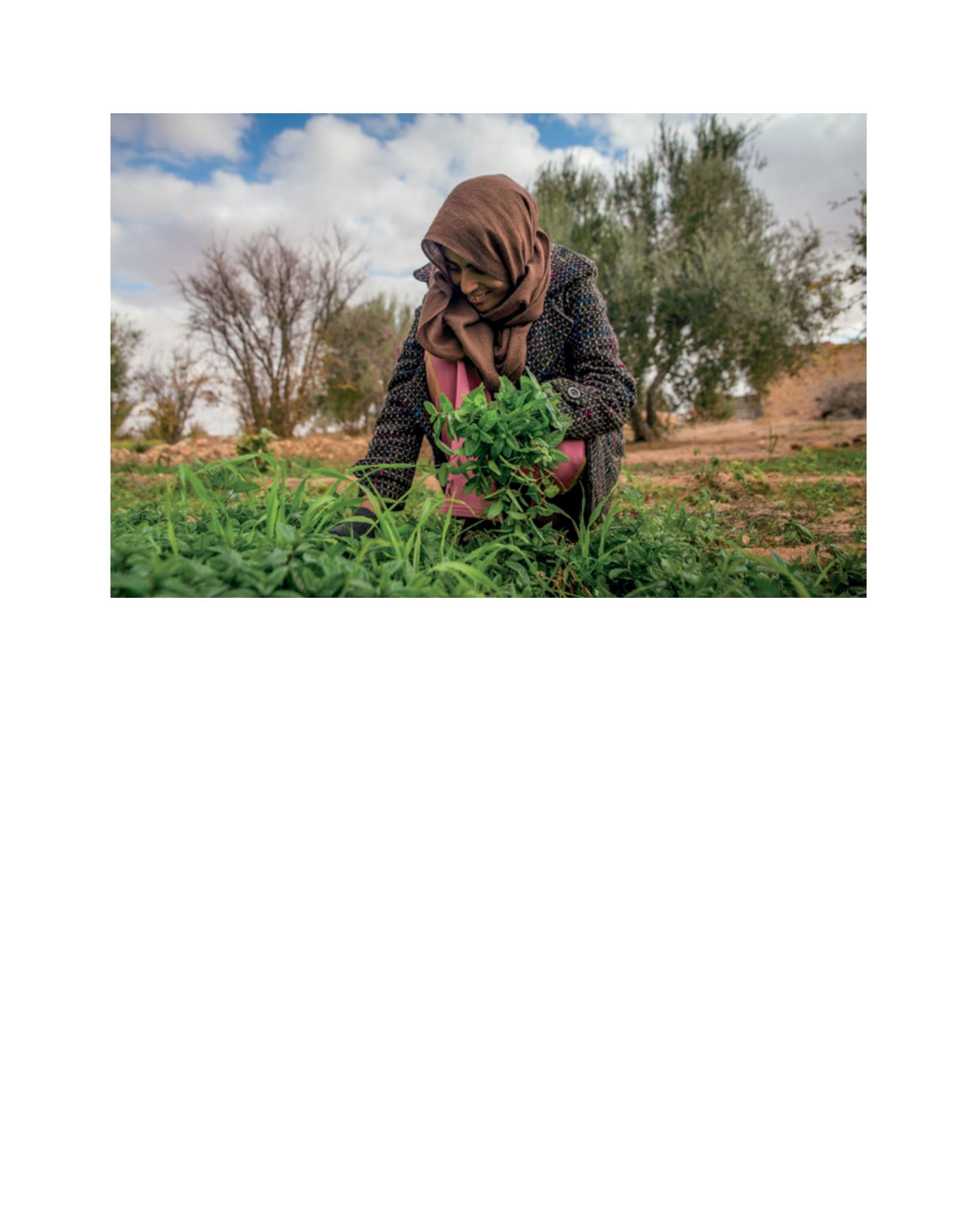

[
] 192
frequent and intense periods of drought, resulting in a trend
of drier soils. With already fragile ecosystems, the unreliable
precipitation pattern from climate change has increased the
vulnerability of farmers in dry areas to crop failures and falls
in crop and livestock productivity.
In addition, family farms in the drylands are challenged by
political marginalization, limited access to markets and credit,
insufficient infrastructure and poor quality social services. All
these factors combine to limit the options available to family
farms and their members, driving them further into poverty
and pushing some of their members – particularly the young
– out of the family farm to seek off-farm or non-farm work
elsewhere. Breaking this vicious cycle of poverty requires
robust institutions, fair policies, larger investments, increased
research and a renewed focus on science, technology and
innovation. A strong political commitment is required to
address the complex factors affecting family farming in the
drylands and their evolving needs.
The challenges facing family farms in the drylands are
daunting. Much more needs to be done by the research, devel-
opment and policy communities, working in close partnership
with all members of the family farm, to increase their produc-
tivity while encouraging the sustainable use of the natural
resource base.
The environmental sustainability of family farming in the
drylands can be addressed by helping family farms conserve
and sustainably use their land and water. There must be a
focus on improving water availability and enhancing water
productivity, as well as on building soil fertility, combating
land degradation and conserving biodiversity.
The social sustainability of family farms can be addressed
by generating employment opportunities for family farming
members, increasing access to resources and opportunities for
women, and attracting youth to agriculture by making farming
more intellectually challenging and economically rewarding.
From the economic sustainability perspective, science and
development efforts should focus on helping small farms
improve their income by increasing the productivity of their
lands and reducing production costs. Producing more high-
value, quality products increases the sustainability of family
farms. In some cases, the key factor to the success of the
family farm is the ability of its members to access microcredit
and have the capability to link directly to the market.
The International Center for Agricultural Research in the
Dry Areas (ICARDA) has been working in the drylands for
more than 35 years to improve the livelihoods of small family
farmers by helping increase crop productivity through the
sustainable intensification and diversification of their produc-
tion systems. It is clear that there is no silver bullet to cope
with challenges faced in dry areas; science-based technologi-
cal change is necessary to fuel the transition from traditional
to sustainable agriculture.
For example, in 2010, a wheat stripe rust epidemic in
Ethiopia wiped out crops and left thousands of family farms
devastated. Protecting farmers against the destructive effects
of stripe rust was the aim of a USAID-funded initiative that
Image: ICARDA
Producing more high-value, quality products increases the sustainability of family farms
D
eep
R
oots
















